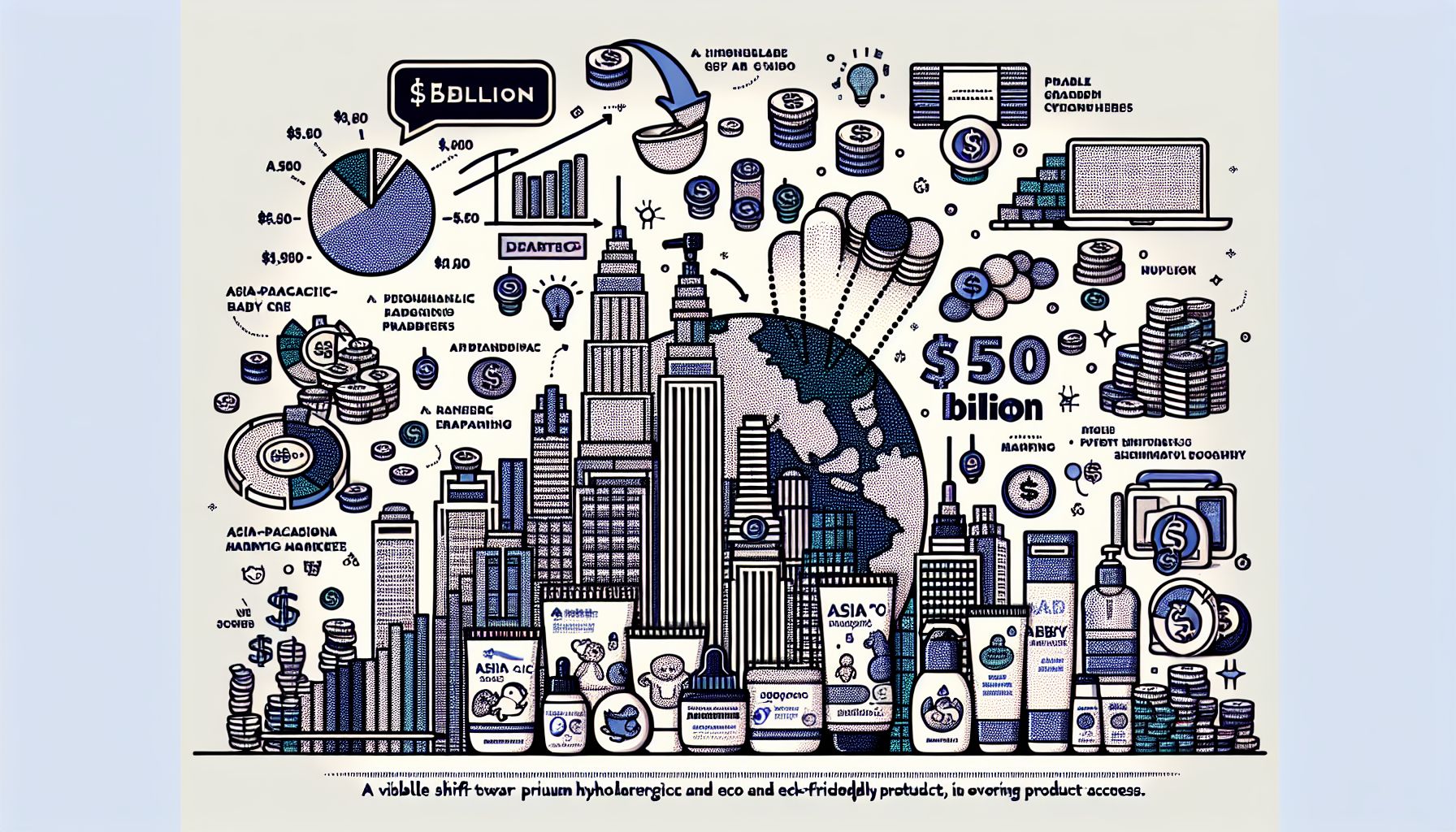Asia-Pacific Baby Care Market Booms, Hitting $50 Billion Milestone

Dublin, Tuesday, 12 November 2024.
The Asia-Pacific baby care products market has surpassed $50 billion in 2024, driven by rising birth rates and increasing disposable incomes. With a projected CAGR of 8.8% until 2029, the sector is seeing a shift towards premium, hypoallergenic, and eco-friendly products, particularly in skincare. E-commerce is reshaping purchasing habits, offering parents wider product access.
Drivers of Market Growth
The Asia-Pacific (APAC) region’s baby care products market is experiencing robust growth, propelled by several key factors. Rising birth rates in countries such as China and India, coupled with increasing disposable incomes, are expanding the consumer base for premium baby care products. Parents are gravitating towards hypoallergenic and chemical-free options, reflecting a growing concern for infant health and well-being[1]. These trends are contributing to a shift in consumer preferences, favoring products that offer safety and comfort.
E-commerce Revolutionizing Access
E-commerce platforms have revolutionized the way parents purchase baby care products. The convenience of online shopping allows easy access to a diverse range of products, making it simpler for consumers to compare and choose items that best suit their needs[2]. This shift is not only boosting sales but also enabling smaller players to enter the market and compete with established brands. Major companies like Procter & Gamble, Kimberly-Clark, and Johnson & Johnson are leveraging these platforms to reach a broader audience.
Challenges and Competitive Landscape
Despite the promising growth, the baby care market in APAC faces several challenges. Varying regulatory standards across countries pose compliance difficulties for manufacturers. Additionally, intense competition and the prevalence of counterfeit products threaten brand integrity and consumer trust[1]. Companies are investing in research and development to innovate and differentiate their offerings, focusing on safety, efficacy, and sustainability to maintain a competitive edge.
Future Opportunities
The market’s future looks promising with opportunities for expansion into untapped regions. As the middle class continues to grow, particularly in emerging markets, the demand for high-quality baby care products is expected to rise. Innovations in product formulations, such as those incorporating plant-based and organic ingredients, are likely to capture consumer interest. Furthermore, the emphasis on eco-friendly packaging and ethical sourcing will be pivotal in shaping the market’s trajectory[3].